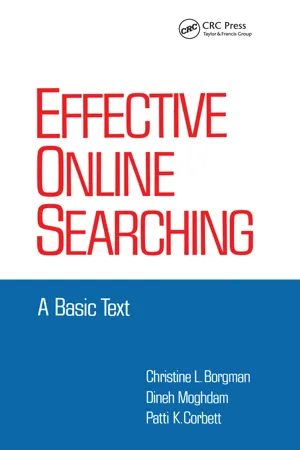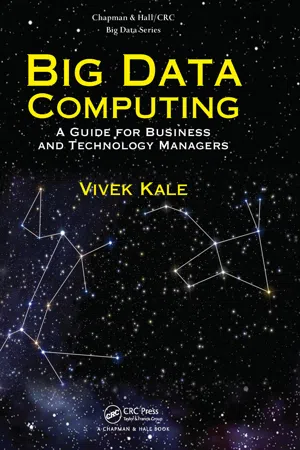Databases
Databases are organized collections of data that are stored and accessed electronically. They are designed to efficiently manage, retrieve, and update large volumes of information. Databases are widely used in computer science for applications such as websites, business systems, and data analysis.
7 Key excerpts on "Databases"
- eBook - ePub
Information Systems
What Every Business Student Needs to Know, Second Edition
- Efrem G. Mallach(Author)
- 2020(Publication Date)
- CRC Press(Publisher)
...5 Data, Databases, and Database Management Chapter Outline 5.1 The Database Concept 5.2 Operational Databases 5.3 Databases for Decision Making 5.4 Database Management Software 5.5 Database Security Why This Chapter Matters Computers do not make businesses successful. Intelligent use of information helps make businesses successful. Computers are a tool in using information intelligently. Databases are a key technology in making today’s intelligent uses of information practical. To get the information we need when we need it, that information must be properly organized. Proper organization makes it possible to retrieve information efficiently, without a lot of extra work; to control access to information, making it available to those who need it but not to those who shouldn’t have it; and to use this information in new, creative ways. As a businessperson you must be on the lookout for new ways to use information. Knowing how computers organize information will help you do this. Knowing this will also help you work with professional database designers to get the Databases you need to do your work. Chapter Take-Aways As you read this chapter, focus on these key concepts to use on the job: 1 Databases help organizations become effective by allowing people and applications to share common organizational information. 2 Most Databases today use the relational model. Relational Databases are flexible. They can handle applications that were not foreseen when the database was first set up. 3 Applications that involve data analysis and decision making may use other database models. 4 Using Databases requires database management software to store and retrieve data on behalf of users and applications. 5.1 The Database Concept A database is an organized collection of data about related real-world items or concepts. At the lowest level data consists of bytes, because bytes are the basic storage unit of computers...
- eBook - ePub
Effective Online Searching
A Basic Text
- Christine L. Borgman, Dineh Moghdam, Patti K. Corbett(Authors)
- 2021(Publication Date)
- CRC Press(Publisher)
...6 Databases A thorough knowledge of the structure and content of a database is basic to the training of a search analyst. Yet, it would be impossible to do justice to the topic as a whole without placing stringent limits on the scope of the discussion. Thus, the following points are covered only to the extent that they affect the ability of the search intermediary to conduct an online bibliographic search: the origin of Databases and the structure of the industry; types of Databases and their relationship with printed indexes; selecting the appropriate Databases; the internal makeup and structure of a typical database, including elements of standardization; the relationship between Databases and information retrieval systems; and finally, where to turn for more information on a given database. As mentioned in Chapter 1, a database refers to any organized collection of related computer-readable data. In this particular case, emphasis is entirely upon those Databases which are searchable through the large, multi-database, commercial information retrieval systems. However, one should not lose sight of the fact that information contained in many such Databases has previously been available in a printed format, namely the index. A collection of Databases, such as those offered by a search system vendor, is sometimes referred to as a "databank." In a library context, most electronic Databases are based on an equivalent printed index but offer greater flexibility and sophistication in the searching process. Computer capabilities can be utilized to take advantage of multiple access points to each entry, and logical relationships can be required among entries to refine a query further. ORIGIN OF Databases Although the capability of producing electronic Databases coincided with the production of the first computer, the practicality of the venture depended upon the ability to search large volumes of data at a low cost per search...
- eBook - ePub
Big Data Computing
A Guide for Business and Technology Managers
- Vivek Kale(Author)
- 2016(Publication Date)
- Chapman and Hall/CRC(Publisher)
...Section I Genesis of Big Data Computing 2 Database Basics The genesis of the big data computing can be traced to the development of Databases in the 1960s. For the major part of computing history, database solutions have been focused on capturing, storing, managing, querying, and analyzing structured data. The advent of Internet and the emergence of end-consumer solutions such as web portals, social networks, and mobility solutions have resulted in a deluge of unstructured and real-time data that have to be mined for detecting the patterns of significance critical for the functioning of the digital economy. But the journey commenced with traditional Databases-hierarchical, network and relational Databases, which subsequently evolved into more refined object-oriented Databases. This chapter presents an overview of the characteristics of these traditional Databases and lessons learnt from using, developing, and maintaining them. 2.1 Database Management System A database management system (DBMS) provides the needed organizational approach to flexible storage and retrieval of large amounts of data. A DBMS provides for the organization of the data elements, the representation of relationships among the elements, and the uniform interface for users. A database management system (DBMS) supports the reliable storage of the database, implements the relationship structures, and offers uniform storage/retrieval services to users. Actual DBMS implementations are very complicated software systems. The software implementation of each model involves several levels, from the physical structures on disk storage devices through the abstractions (e.g., tables, objects) that describe an application. Variations occur both in the expression of the model structures and in the extra features that distinguish a product from its competitors. A database is a self-describing collection of data elements, together with relationships among those elements, that presents a uniform service interface...
- eBook - ePub
- James P. Neelankavil(Author)
- 2015(Publication Date)
- Routledge(Publisher)
...External database compilers use computers and modern telecommunication technology to collect and store data. Some of the large Databases are kept current by entering data and information from the latest reports. Some of these reports can be downloaded directly from the source’s computers, speeding up the process. • A wide variety of data is available. Database management has contributed tremendously to the collection of data from a wide variety of sources on a vast number of topics. The variety of topics covered through Databases has made it possible for researchers to obtain comprehensive information on almost any topic. • Databases are easy to use. Recognizing the need for user-friendly systems, many software developers have introduced menu-driven interface devices. The menu-driven interface systems have grown in popularity among novice database users. The simple logic of the interface makes it self-instructive. The search process is simplified by the fact that most external database providers use simple common search commands and protocols for accessing the data. The common language commands developed for accessing Databases have made the task of retrieving data simple. • Electronic retrieval of data is very convenient. Using Databases, researchers can retrieve information from any location—home, the workplace, or anywhere the user has access to a computer, including while flying 33,000 feet above sea level. Development of computer networks and growth in the use of modems for computer connectivity have created an environment in which it is convenient to use Databases. Databases are accessible any time of the day or night; such convenience is not available with other data-retrieval methods. • Database information is relatively inexpensive. Developments in technology have reduced the cost of computer access. As a result, the cost of database development and management has gone down...
- eBook - ePub
Encyclopedia of Computer Science and Technology
Volume 14 - Very Large Data Base Systems to Zero-Memory and Markov Information Source
- Jack Belzer, Albert G. Holzman, Allen Kent(Authors)
- 2021(Publication Date)
- CRC Press(Publisher)
...Any organization has a great need for information, and stores it as data, often in computer-based systems. The article on Data Base Data Structures [4] by Jardine discusses modeling and general data systems concepts, and provides some background. The idea of data bases and the need for systems to manage them led to the generalized data base management system (GDBMS or DBMS) which was accepted in the late 1960s as an important concept which could be effectively implemented as a building block for large-scale information systems development and design. There were several early surveys of such DBMS, notably those of the CODASYL Systems Committee in 1969 and 1971 [ 5, 6 ], and many people in the user and computer community were convinced that DBMS were essential as components of large-scale information systems. Large-scale users of data in the 1950s and 1960s had seen the need for computer automation and had already implemented some large data systems using both traditional programming languages (e.g., COBOL or PL/I) and the facilities of the operating system to provide reasonable user access to substantial volumes of data. The era of the DBMS was heralded in with the need for integration and the concept that all data should be universally available for authorized use. Thus the data industry was faced with two somewhat different concepts of information system design: The traditional approach in which the implementer had to determine the user needs and design a special system for that purpose. The data base approach in which data were provided as a resource to any authorized user who had current need to access it. Unfortunately, however, neither approach has proved to be perfect. The traditional approach is generally more expensive to implement and often leads to duplication of data (by two different user groups that do not communicate); this need for (the same) data by a potential user is often difficult or even impossible to fill within a short time frame...
- eBook - ePub
- Philip Bowcock, Natalie Bayfield(Authors)
- 2014(Publication Date)
- Estates Gazette(Publisher)
...Chapter 4 Databases 4.1 Databases – systems for cataloguing and finding information A database is a structured method of storing data so that it can be retrieved easily Some Databases are created simply to provide single items of information as and when required – for example the standard telephone directory Others, such as a card index, will allow the user to collate information in other ways – colour coding for example – so that a particular class of information can be readily identified. We gave examples of how a simple database could be created in Excel for Surveyors. This involved records of sales of houses, including price, number of rooms, and other information. We also demonstrated how data could be sorted and filtered by various criteria. We now consider a more complex example of a portfolio of many commercial properties in which individual valuations are made for the purposes of the annual report. The data is then assembled into a summary so that it can be used for detailed analysis in ways which we shall discuss later. 4.2 Designing the database Before starting to compile our database the first obvious question to ask is, ‘What is it for?’ Purposes may vary from a simple facility to look up names and addresses to arranging detailed property data so that a portfolio analysis can be carried out. Before starting it is good practice to write down the name of each item of relevant data. This enables us to revise the eventual structure before getting too far into the compilation of the worksheet. Having prepared our list of data items, and assuming that we are not importing them from an existing file, we enter each item name into the first row of a new worksheet. This will become the ‘header’ or name of each field for all subsequent operations. If we later change our mind on the order in which the columns should appear all is not lost...
- eBook - ePub
- Arthur C. Graesser, John B. Black, Arthur C. Graesser, John B. Black(Authors)
- 2017(Publication Date)
- Routledge(Publisher)
...13 Data Base Querying by Computer Steven P. Shwartz Cognitive Systems Inc. Wendy G. Lehnert Univ. of Massachusetts Amherst The computer-human interface problem is rapidly becoming a critical concern to the data processing industry. Computerized data bases are currently available for a wide spectrum of applications ranging from marketing to law to finance. The computer systems attached to these data bases can, in principle, provide answers to an enormous number of user questions. But in fact, only a small percentage of the potential user population knows how to formulate queries to a data base, i.e., only those with data processing skills. Data Base Querying: A Brief History Natural language processing technology represents an enormous advance in the user-friendliness of computer systems. In the following section, we present a brief history of the development of user-friendly systems in order to put this new technology in perspective. Programming Languages The earliest computer data base query systems required queries written in machine or assembler language. To program in machine or assembler language one needs a knowledge of the physical structure of the data base, a knowledge of programming constructs such as loops, variables, and procedures, and a knowledge of the architecture of the machine on which the data base resides. Such programming skills are present in only a very small percentage of the potential user population for most data bases. The development of high-level languages, such as FORTRAN, reduced the requisite level of programming expertise. A program written in a particular high-level language will run with virtually no modification on a wide variety of different computers. For this reason, high-level programmers do not need to be knowledgeable concerning computer architecture. However, considerable programming skill is still necessary to access a data base using even high-level languages...






